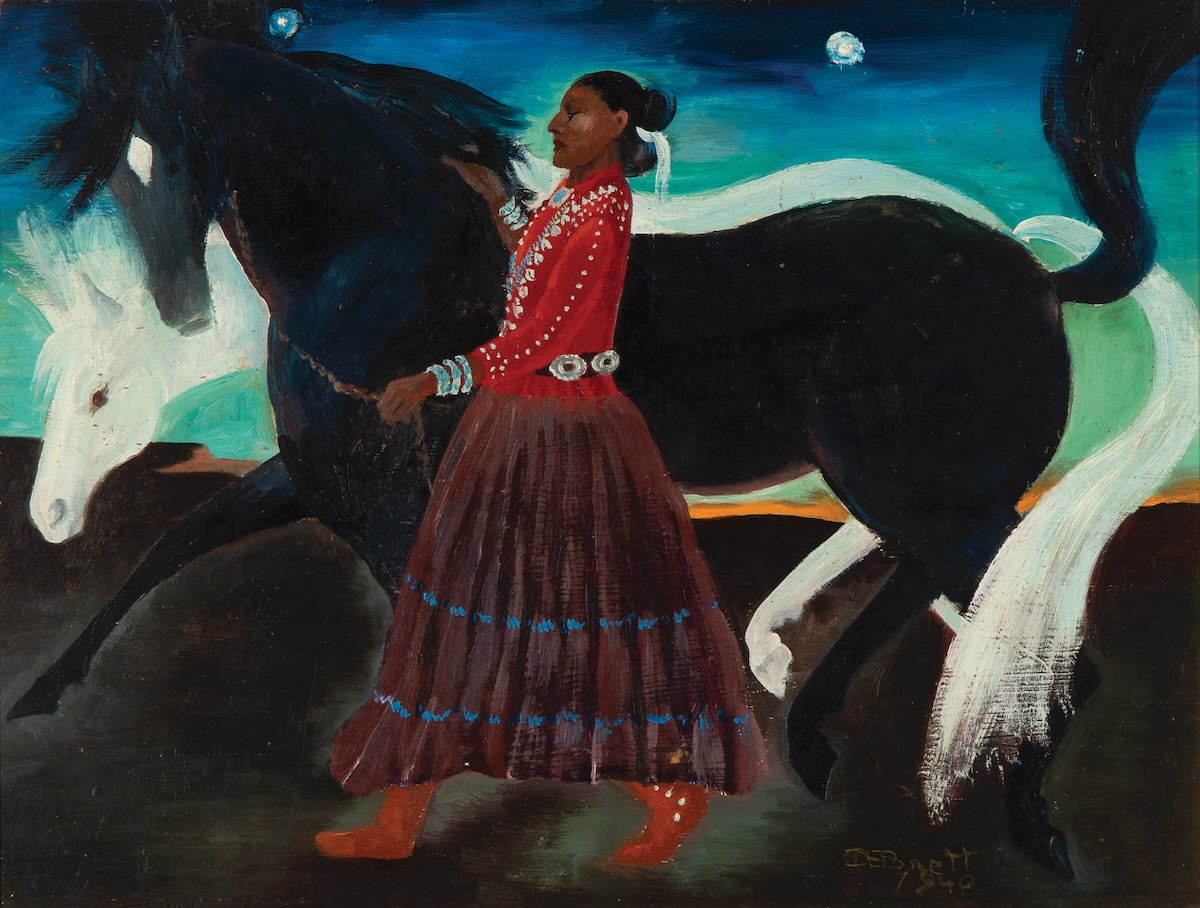Gillian Blitch might have stayed in Spain where she studied for two years. Or become a practicing lawyer in England, the country where she was born. Or, she might be living and working in Japan today, a place she called home for eight years. But here she is today, living and working in Santa Fe as the president and CEO of Santa Fe Art Auction. Along her journey, she acquired the knowledge, the drive, and a set of skills that call on both left brain and right, that put her in charge of the preeminent auction house in the Southwest.

Taking Over the Santa Fe Art Auction
Blitch joined SFAA at the end of 2017, and launched online auctions in 2018. It was a prescient move: when COVID struck, the auction house had already pivoted, and was able to nimbly navigate through a time when in-person auctions were a thing of the past. “Within one year, we had doubled in volume, both in items that we sold and in dollar volume. The first four years, it doubled every year,” she says.
Much of that fluid movement was thanks to Blitch’s knowledge and interest in database design, something she became fascinated with when she moved to California to work for a real estate developer. “That was when I built my first database, and found out that I also loved numbers, as much as I love people.”
At SFAA, she saw an opportunity to streamline processes, integrate them, and make them work smarter and better. The work has paid off. SFAA has gone from hosting one major sale each year, to 10 in a typical year. The Signature Annual Sale––the best of the best––is online and in-person, while the others are all online.

Charles Loloma (Hopi, 1921 – 1991), Inlaid Mosaic Cuff Bracelet, ca. 1980-1985. Recently sold at an SFAA auction.
Collecting in New Mexico
What does she love most about her job? She says they can receive hundreds or thousands of submissions for a sale. She loves making sense of those pieces, finding points of connection, and creating a sale that tells a story. “And that last part of the process, where you tell the story through the sale, and then you display it, and then you get to see what has come of what might otherwise appear to be 300 or 400 entirely random submissions––that’s still for me, the very best part.”
For the keen or keen to-be-collector, Blitch says there are several areas that are particularly strong now, whether you’re looking to buy at auction or from a gallery. “We do see that anything that is historically made here in New Mexico is very, very strong.” That could be anything from 1957 school benches from Taos High School or early straw appliqué crosses. (“And for us, those are very, very highly valued now.”)
From Historic to Contemporary
Native American art is, and always has been, a strong suit for the auction house with two dedicated sales featuring works by Pueblo and Tribal artists. Blitch now sees a growing interest in not only historic pieces but also contemporary ones. “There is a wonderful emerging class of contemporary Native American artists who are doing really exciting things. They are breaking out into lots of new media, using their long-held cultural belief systems, their mythologies, but expressing them in incredibly modern ways.” Blitch points to artists like Tony Abeyta (Diné), and Virgil Ortiz (Cochiti Pueblo), both firmly rooted in the traditions of their culture while incorporating new references into their art.

Dorothy Eugenie Brett (1883 – 1977), Changing Woman with Hero Twins / “Walking Beauties”, 1940, 10 3/4 x 14 1/4 in. Part of an upcoming SFAA auction.
Women artists––contemporary Native Americans such as Cara Romero (Chemehuevi), Rose B. Simpson of Santa Clara Pueblo, and Jaune Quick-to-See-Smith (an enrolled Salish, The Salish and Kootenai Nation, Montana)––are especially of interest today. As well, female painters who travelled to New Mexico in the early 20th century like Barbara Latham, Rebecca James, and Dorothy Brett, are garnering long overdue attention, says Blitch.
When we speak, Blitch has just finished an auction of works on paper, a particular favorite of hers. It draws a combination of new collectors, along with established and passionate collectors. Hosting sales of this size and complexity can be a logistical nightmare but Blitch ensures the buyers and sellers never see the challenges. “It’s the duck on the surface of the pond,” she says. “We’re paddling like mad underneath, but the surface of the pond is perfectly still.”
Story by Julia Platt Leonard / Portrait photography by Gabriella Marks / Art images courtesy of SFAA
 Subscribe to TABLE Magazine‘s print edition.
Subscribe to TABLE Magazine‘s print edition.
